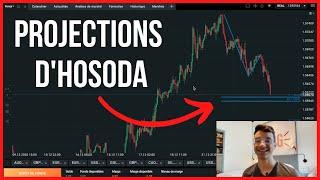http://www.Gabelli.com
Invest with Us 1-800-GABELLI (800-422-3554)
Digital advertising
o Every company that has reported has confirmed Q1 was a quarter of two halves, a strong January and February followed by significant decline in March.
o ad pricing was down across the board. Facebook, as an example, reported 40% impression growth but 16% decline in price.
o The verticals with the most pronounced weakness are the obvious, such as travel and auto,
o where Google is relatively more exposed relative to its peers, with as much as 15% of revenues derived from the travel segment. That, and the law of large numbers, explains Google Search’s lower revenue growth in Q1.
o Of course, Q1 revenue only reflects a couple weeks of decline in March, so more important for us are the trends exiting the quarter into April.
o And this speaks to another big theme out of the quarter was the power of direct response advertising. Direct response advertising refers to an ad that is intended to drive an immediate action, for instance, an app download for a video game, or a limited time offer on an e-commerce product.
o And what we saw this quarter was ad platforms that skew heavier on direct response were actually quite resilient, this was most visible in the results from Snapchat, YouTube and Facebook. And the two verticals that were really driving strength in DR were gaming and e-commerce, which are obviously relative beneficiaries of the shelter-in-place environment.
o Lastly, Google management expects Search to be one of the first ad channels to recover along with the economy, given its ease of use and transparent ROI. We would extrapolate that further and say that we think this dynamic is true for all digital ad platforms.
o All in all, given the incredible demand shock to the economy, I think investors have to be impressed with how resilient digital ad trends were and continue to be, and that really speaks to the breadth of the advertiser base on the platforms, and also the auction dynamics and conversion based pricing.
- E-commerce
o Moving on to e-commerce, e-commerce obviously saw surge demand from consumers stocking up on essentials and staples in March, partially offset by a decline in discretionary categories.
o Amazon’s paid unit growth accelerated but Amazon saw a commensurate acceleration in shipping costs
o For the in demand items, mostly staples, these are generally lower ASPs than more discretionary purchases. Amazon management suggested that the company is basically selling these products at cost during this period.
o Jeff Bezos is no stranger to making bold investments, and that’s exactly what the company plans to do, targeting $4B or more in COVID related expenses in Q2, including things like testing, increased pay for hourly employees, and enhanced cleaning and social distancing practices in their warehouses.
o We actually see two opportunities for Amazon’s e-commerce business: one is to grow Prime members, there’s some third-party reporting that this is occurring, and that’s significant since Prime members have high lifetime value and spend on average twice as much as non-Prime members.
o But the other structural change to come out of this crisis is online penetration of the $800B grocery category, which currently stands are just mid-single digits.
- Streaming video
o And lastly, streaming video.
o Netflix paid net adds of 16M were more than double management guidance of 7M.
o Netflix does acknowledge that pull forward activity suggests that paid net adds in the 2nd half of the year could be lower on a year over year basis.
o Still, we think this is a meaningful development for NFLX. The faster Netflix can add subs, all else equal, the higher the net present value of the stock.
o There are ongoing concerns around studio production being shutdown indefinitely. While this is negative on an absolute basis, we think this is positive for Netflix on a relative basis. NFLX has a content pipeline to last through 2021, they can always enhance this pipeline with licensed content, and they have a vast content library of which most subscribers have not fully explored, so they can always resurface older, but still high quality, content to subscribers.
o And relative to competitors, who are facing headwinds from declining TV advertising revenue, NFLX is seeing increased revenues which will enable them to fund their impressive content budget
Invest with Us 1-800-GABELLI (800-422-3554)
Digital advertising
o Every company that has reported has confirmed Q1 was a quarter of two halves, a strong January and February followed by significant decline in March.
o ad pricing was down across the board. Facebook, as an example, reported 40% impression growth but 16% decline in price.
o The verticals with the most pronounced weakness are the obvious, such as travel and auto,
o where Google is relatively more exposed relative to its peers, with as much as 15% of revenues derived from the travel segment. That, and the law of large numbers, explains Google Search’s lower revenue growth in Q1.
o Of course, Q1 revenue only reflects a couple weeks of decline in March, so more important for us are the trends exiting the quarter into April.
o And this speaks to another big theme out of the quarter was the power of direct response advertising. Direct response advertising refers to an ad that is intended to drive an immediate action, for instance, an app download for a video game, or a limited time offer on an e-commerce product.
o And what we saw this quarter was ad platforms that skew heavier on direct response were actually quite resilient, this was most visible in the results from Snapchat, YouTube and Facebook. And the two verticals that were really driving strength in DR were gaming and e-commerce, which are obviously relative beneficiaries of the shelter-in-place environment.
o Lastly, Google management expects Search to be one of the first ad channels to recover along with the economy, given its ease of use and transparent ROI. We would extrapolate that further and say that we think this dynamic is true for all digital ad platforms.
o All in all, given the incredible demand shock to the economy, I think investors have to be impressed with how resilient digital ad trends were and continue to be, and that really speaks to the breadth of the advertiser base on the platforms, and also the auction dynamics and conversion based pricing.
- E-commerce
o Moving on to e-commerce, e-commerce obviously saw surge demand from consumers stocking up on essentials and staples in March, partially offset by a decline in discretionary categories.
o Amazon’s paid unit growth accelerated but Amazon saw a commensurate acceleration in shipping costs
o For the in demand items, mostly staples, these are generally lower ASPs than more discretionary purchases. Amazon management suggested that the company is basically selling these products at cost during this period.
o Jeff Bezos is no stranger to making bold investments, and that’s exactly what the company plans to do, targeting $4B or more in COVID related expenses in Q2, including things like testing, increased pay for hourly employees, and enhanced cleaning and social distancing practices in their warehouses.
o We actually see two opportunities for Amazon’s e-commerce business: one is to grow Prime members, there’s some third-party reporting that this is occurring, and that’s significant since Prime members have high lifetime value and spend on average twice as much as non-Prime members.
o But the other structural change to come out of this crisis is online penetration of the $800B grocery category, which currently stands are just mid-single digits.
- Streaming video
o And lastly, streaming video.
o Netflix paid net adds of 16M were more than double management guidance of 7M.
o Netflix does acknowledge that pull forward activity suggests that paid net adds in the 2nd half of the year could be lower on a year over year basis.
o Still, we think this is a meaningful development for NFLX. The faster Netflix can add subs, all else equal, the higher the net present value of the stock.
o There are ongoing concerns around studio production being shutdown indefinitely. While this is negative on an absolute basis, we think this is positive for Netflix on a relative basis. NFLX has a content pipeline to last through 2021, they can always enhance this pipeline with licensed content, and they have a vast content library of which most subscribers have not fully explored, so they can always resurface older, but still high quality, content to subscribers.
o And relative to competitors, who are facing headwinds from declining TV advertising revenue, NFLX is seeing increased revenues which will enable them to fund their impressive content budget
- Catégories
- E commerce Divers














Commentaires